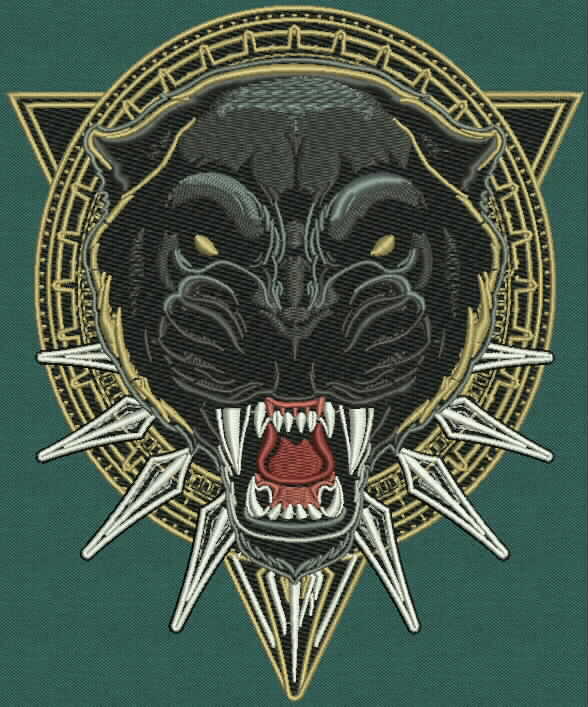Professional Digitizing for Embroidery: Quick and Reliable Solution
Professional Digitizing for Embroidery: Quick and Reliable Solution
Blog Article
Simplifying the Art of Needlework Digitizing: Step-by-Step Guide
As modern technology continues to breakthrough, the digitization procedure has come to be much more accessible, enabling fanatics to bring their detailed layouts to life with ease. In this guide, we will untangle the complexities of needlework digitizing, damaging down each step methodically to streamline the procedure and encourage both beginners and experienced embroiderers alike.
Recognizing Embroidery Digitizing Software Application
Needlework digitizing software program works as a critical device for changing elaborate styles right into digital formats compatible with embroidery machines, facilitating specific stitching and personalization. This customized software permits users to import different photo file styles, such as JPG or PNG, and transform them into embroidery machine-readable styles like DST, EXP, or PES - Digitizing for Embroidery. By making use of features like stitch modifying, underlay options, and thread shade option, digitizing software makes it possible for individuals to control every facet of the layout procedure
Moreover, progressed needlework digitizing software application provides devices for producing complex layouts, changing stitch thickness, and including complex details. Users can additionally preview the design prior to sewing it out, ensuring accuracy and decreasing errors. Furthermore, several software application offer automated features that aid improve the digitizing procedure, saving effort and time.
Recognizing the capabilities of needlework digitizing software application is important for attaining premium cause needlework projects. By grasping this tool, needlework enthusiasts and professionals can unleash their creativity and bring detailed layouts to life with accuracy and performance.

Selecting the Right Design Data
After familiarizing yourself with the capabilities of embroidery digitizing software program, the next essential step in the process is choosing the appropriate design apply for your project. Digitizing for Embroidery. When picking a design documents for embroidery digitizing, it's vital to consider the complexity of the style, the dimension of the final product, and the sort of fabric you will be functioning with
For complex designs with fine information, a high-resolution picture or vector file is advised to ensure that the needlework device can properly duplicate the style. Furthermore, the dimension of the final product plays a considerable duty in selecting the ideal design data. Bigger designs may need higher resolution documents to preserve clearness and sharpness.
Additionally, the sort of textile you will be embroidering on influences the selection of design documents. Various fabrics may need modifications in the design documents to guarantee that the stitches are correctly lined up and the layout looks like meant. By very carefully picking the best style documents based on these factors, you can set on your own up for an effective needlework digitizing procedure.
Digitizing Devices and Techniques
Using specialized software and accuracy strategies, digitizing tools are crucial in transforming complex styles right into embroidery-ready documents. Needlework digitizing software application, such as Wilcom, Hatch, or Embrilliance, supplies the needed platform to transform artwork into stitch information. These programs provide features like stitch editing, padding options, and text tools to make sure the style equates perfectly onto material.
One of the vital strategies in digitizing is creating a clear course for the needlework equipment to adhere to. This involves digitizing each element of the style with accuracy, establishing stitch kinds, thickness, and directions. By utilizing devices like digitizing tablets or software-specific plugins, embroiderers can achieve a high degree of precision in their digitized styles.
Additionally, understanding the art of rug stitching is vital for generating top quality embroidery. Underlay stitching stabilizes the fabric and produces a structure for the layout, making certain that the end product is both aesthetically appealing and long-lasting. By recognizing these digitizing tools and techniques, embroiderers can raise their craft and bring intricate layouts to life with precision and performance.
Tailoring Stitch Kinds and Directions
Having established a structure in Full Article digitizing tools and techniques, a critical aspect in progressing embroidery craftsmanship depends on more tips here personalizing stitch types and instructions with precision and purpose. The option of stitch types can dramatically influence the total look and appearance of the embroidered design. Satin stitches, recognized for their smooth and shiny surface, job well for creating boundaries and message. On the other hand, fill stitches are perfect for covering larger areas successfully. By tactically integrating these stitch kinds, embroiderers can accomplish depth and dimension in their styles.
Additionally, the direction of stitches plays a critical function in enhancing the visual charm of the final needlework. By experimenting with various stitch angles and patterns, embroiderers can bring their styles to life with impressive information and complexity.
Testing and Refining Your Digitized Layout
To guarantee the precision and top quality of your digitized style, detailed testing and refinement are essential action in the embroidery digitizing procedure. As soon as you have actually completed the digitization of your layout, it is important to evaluate it prior to continuing with the real needlework. Checking enables you to recognize any kind of potential problems such as thread breaks, sew thickness problems, or design distortions that might affect the outcome.

After testing, it is essential to improve your digitized layout based upon the responses from the test sew-out. This may involve tweaking sew setups, adjusting thickness, or making modifications to the total layout to accomplish the desired outcome. By repeating with testing and refinement, you can fine-tune your digitized design to excellence before progressing with the actual embroidery procedure.
Final Thought
In verdict, mastering the art of needlework digitizing needs a thorough understanding of the click here to find out more software application, selecting the best layout documents, making use of digitizing devices and methods, customizing stitch kinds and instructions, and testing and refining the digitized layout. By adhering to these actions, embroiderers can streamline the digitizing process and create high-grade stitched styles with accuracy and efficiency.
Report this page